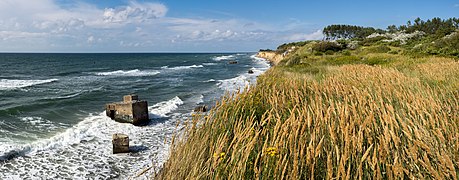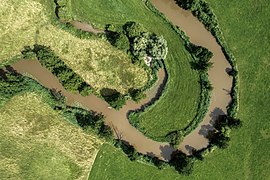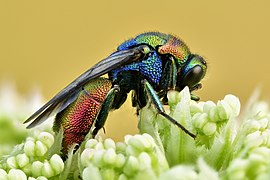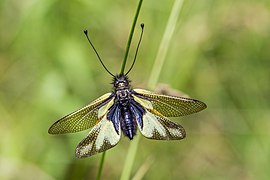User talk:Rohieb
Picture of the Year 2013 R2 Announcement[edit]
Round 2 of Picture of the Year 2013 is open![edit]
- ⧼Wikibase-terms/Rohieb⧽: Deutsch, Ελληνικά, English, français, magyar, italiano, македонски, 日本語, русский, svenska

Dear Wikimedians,
Wikimedia Commons is happy to announce that the second round of the 2013 Picture of the Year competition is now open. This year will be the eighth edition of the annual Wikimedia Commons photo competition, which recognizes exceptional contributions by users on Wikimedia Commons. Wikimedia users are invited to vote for their favorite images featured on Commons during the last year (2013) to produce a single Picture of the Year.
Hundreds of images that have been rated Featured Pictures by the international Wikimedia Commons community in the past year were entered in this competition. These images include professional animal and plant shots, breathtaking panoramas and skylines, restorations of historical images, photographs portraying the world's best architecture, impressive human portraits, and so much more.
There are two total rounds of voting. In the first round, you voted for as many images as you liked. The top 30 overall and the most popular image in each category have continued to the final. In the final round, you may vote for just one image to become the Picture of the Year.
Round 2 will end on 7 March 2014. https://commons.wikimedia.org/wiki/Special:MyLanguage/Commons:Picture_of_the_Year/2013/Introduction/en Click here to learn more and vote »]
Thanks,
the Wikimedia Commons Picture of the Year committee
You are receiving this message because you voted in the 2013 Picture of the Year contest.
This Picture of the Year vote notification was delivered by MediaWiki message delivery (talk) 19:22, 22 February 2014 (UTC)
Picture of the Year 2013 Results Announcement[edit]
Picture of the Year 2013 Results[edit]
- In other languages: Deutsch, español, français, 日本語, Nederlands, русский, svenska, Türkçe, українська

Dear Rohieb,
The 2013 Picture of the Year competition has ended and we are pleased to announce the results: We shattered participation records this year — more people voted in Picture of the Year 2013 than ever before. In both rounds, 4070 different people voted for their favorite images. Additionally, there were more image candidates (featured pictures) in the contest than ever before (962 images total).
- In the first round, 2852 people voted for all 962 files
- In the second round, 2919 people voted for the 50 finalists (the top 30 overall and top 2 in each category)
We congratulate the winners of the contest and thank them for creating these beautiful images and sharing them as freely licensed content:
- 157 people voted for the winner, an image of a lightbulb with the tungsten filament smoking and burning.
- In second place, 155 people voted for an image of "Sviati Hory" (Holy Mountains) National Park in Donetsk Oblast, Ukraine.
- In third place, 131 people voted for an image of a swallow flying and drinking.
Click here to view the top images »
We also sincerely thank to all 4070 voters for participating and we hope you will return for next year's contest in early 2015. We invite you to continue to participate in the Commons community by sharing your work.
Thanks,
the Picture of the Year committee
You are receiving this message because you voted in the 2013 Picture of the Year contest.
Delivered by MediaWiki message delivery (talk) 22:59, 26 March 2014 (UTC)
Regarding your FP candidate “File:2021-07-30 Messeberg Hoheneggelsen Sommer.jpg”[edit]

Hallo Rohieb,
Ich wollte das Folgende erst auf der FP-Nominierungsseite schreiben (daher ist der Text englisch), aber da es dort aussehen könnte, als wollte ich mich als Experte aufspielen, schreibe ich Dir lieber hier, wo es mehr nach dem aussieht, was es ist, nämlich nur ein paar Gedanken und Tip(s)s. ;–)
Because you are “interested what others think of it”, I will go a little bit into detail. I think I see what you saw – there is indeed a good picture hidden in that scene, but this photo does not capture it. IMHO the problem is not that the scene was ordinary – the nice clouds, the contrast of the blue sky with the golden field, the contrast between the horizontal and diagonal lines hold the necessary ingredients for a (rather minimalist) good photo – but because the scene seems ordinary, it is all the more difficult to bring out what’s special about it. There are two issues.
(a) The technical quality, as remarked by other reviewers. While we are inclined to compromise on picture quality with shots of exciting scenes, photos of ‘ordinary’ scenes should be of excellent technical quality (compare e.g. the other photos in the gallery). I guess that f/16 is not a good choice on a M4/3 camera like the OM-D E-M10; you should not need to stop down that much, diffraction eats up sharpness, and the small aperture has urged you to raise the ISO value to 400 which contributes to the visible noise. Experienced M4/3 users like Kreuzschnabel, Ermell, Rhododendrites & all. will be able to explain the optimal settings for such photographs with your camera. This may be very helpful to improve your other photographs further in terms of technical quality.
(b) The composition – there are interesting leading lines in this photo, but they are not used in an optimal way. I cannot say how exactly you would get a great composition from it, I would just suggest that when seeing such a scene it is best to experiment a bit and to try various framings. The tree is probably a bit too near to the right border and the right crop is not optimal, because the track and the green grass offer strong leading lines, but in this photo they lead nowhere but are just cut off. So it may have helped to show a bit more at the right in order to include the right corner of the golden field. Of course there is a risk that then the boring road may become to prominent. In that case it may help to go a bit farther away (if possible) and to use a longer focal length. Indeed photos like this are often taken with longer, sometimes very long focal lengths. Another possibility would be to concentrate on the tree – then a wide-angle lens may be indeed appropriate, but you would have to go nearer to the tree to get a dramatic contrast between it and the surroundings, and that may not work in the case of this tree which is not that exciting. Just try it, because (as e.g. Feiniger has emphasized) a photographer must experiment much and will gain only by experiment a feeling for the best compositions.
Hope it helps, --Aristeas (talk) 10:38, 7 May 2022 (UTC)
- Danke für die Gedanken, das ist sehr konstruktives Feedback! --Rohieb (talk) 12:22, 7 May 2022 (UTC)
- Gerne! Das ist es, was ich wollte. Auf der Featured Picture Candidates-Seite bekommt man oft sehr knappes Feedback, das (v.a. wenn es negativ ist ;–). durchaus abschreckend wirken kann. Ich finde es aber sehr schade, wenn wir uns gegenseitig vergraulen – Wikimedia Commons ist ein gemeinschaftliches Projekt, das nicht (nur) von einigen wenigen Super-Fotografen leben kann, sondern viele gute Fotografen braucht. Daher sollten wir uns gegenseitig helfen, um unsere Bilder zu verbessern, statt uns in die Pfanne zu hauen. Auch wenn dieses Foto kein FP wird, bitte ich Dich, dabeizubleiben und weiterzufotografieren. Was die besten Kamera-Einstellungen für Landschaftsfotos angeht, kannst Du tatsächlich einmal einen Blick auf die Bilder der o.g. 3 Fotografen werfen (ganz unten auf der Beschreibungsseite kann man sich die EXIF-Daten anzeigen lassen, die ISO, Belichtungszeit und Blende enthalten) und sie ggf. auch einfach mal fragen. (Ich habe keine M4/3-Kamera, daher kann ich dazu nur bedingt etwas sagen.) Herzliche Grüße, --Aristeas (talk) 18:20, 7 May 2022 (UTC)
- Und weil ich gepingt wurde: Im Prinzip stimmt das da oben. Beugungsunschärfe sagt dir was? Je kleiner das Blendenloch, desto höher der Anteil der Lichtstrahlen, die sich am Rand vorbeimogeln müssen, und weil das Licht sich nun mal (auch) wie eine Welle verhält, werden sie von ebendiesem Rand in alle möglichen Richtungen abgelenkt und machen das Bild unscharf. Dann mach dir klar, dass f/16 ein Verhältnis zur Brennweite ist, d.h. je kürzer die Brennweite, desto kleiner ist das tatsächliche Loch bei gleicher Blendenzahl. 14 mm Brennweite geteilt durch 16 ergibt 0,875 mm freie Öffnung, die du dem Licht noch gegönnt hast. Als zweites mach dir klar, dass auf einem 4/3-Sensor die Pixel deutlich dichter zusammensitzen als auf einem APS-C- oder gar KB-Sensor derselben Megapixelzahl, d.h. Unschärfekreise machen sich im Bild eher bemerkbar, weil die „Betrachtungsgröße“ gegenüber dem Sensor stärker vergrößert ist. Ich persönlich blende bei µFT kaum ab, meist gibt f/4 oder f/5,6 sehr gute Ergebnisse. Die meisten M.Zuiko-Scherben sind auch so gerechnet, dass sie da ihre höchste Leistung zeigen. Was der Sensor tatsächlich an Schärfe kann, siehst du aber erst, wenn du die Rohdateien entsprechend entwickelst. Das jpg aus der Kamera ist immer weichgespült. Guckst du mal von heute File:Grosser_Feldberg_2022-05_ks01.jpg, ohne Stativ oder so mit der E-M1 II und dem billigen 3.5/30er-Makro gemacht, manuell fokussiert. Blende 4,5, also ⅔ Stufen abgeblendet. Enjoy :) --Kreuzschnabel 21:07, 7 May 2022 (UTC)
- Sehe grad, das Bild ist sogar mit RawTherapee entwickelt. Dann musst du da die Rauschreduzierung noch stärker (oder überhaupt erstmal) einbinden. RT ist Handarbeit, da sitze ich manchmal eine Stunde an einem einzigen Bild, bevor es mir gefällt :) Für ein jpg out of camera wäre es für ISO 400 auch ungewöhnlich verrauscht gewesen, so schlimm sieht das eigentlich erst ab 3200 aus. --Kreuzschnabel 21:28, 7 May 2022 (UTC)
- Und weil ich gepingt wurde: Im Prinzip stimmt das da oben. Beugungsunschärfe sagt dir was? Je kleiner das Blendenloch, desto höher der Anteil der Lichtstrahlen, die sich am Rand vorbeimogeln müssen, und weil das Licht sich nun mal (auch) wie eine Welle verhält, werden sie von ebendiesem Rand in alle möglichen Richtungen abgelenkt und machen das Bild unscharf. Dann mach dir klar, dass f/16 ein Verhältnis zur Brennweite ist, d.h. je kürzer die Brennweite, desto kleiner ist das tatsächliche Loch bei gleicher Blendenzahl. 14 mm Brennweite geteilt durch 16 ergibt 0,875 mm freie Öffnung, die du dem Licht noch gegönnt hast. Als zweites mach dir klar, dass auf einem 4/3-Sensor die Pixel deutlich dichter zusammensitzen als auf einem APS-C- oder gar KB-Sensor derselben Megapixelzahl, d.h. Unschärfekreise machen sich im Bild eher bemerkbar, weil die „Betrachtungsgröße“ gegenüber dem Sensor stärker vergrößert ist. Ich persönlich blende bei µFT kaum ab, meist gibt f/4 oder f/5,6 sehr gute Ergebnisse. Die meisten M.Zuiko-Scherben sind auch so gerechnet, dass sie da ihre höchste Leistung zeigen. Was der Sensor tatsächlich an Schärfe kann, siehst du aber erst, wenn du die Rohdateien entsprechend entwickelst. Das jpg aus der Kamera ist immer weichgespült. Guckst du mal von heute File:Grosser_Feldberg_2022-05_ks01.jpg, ohne Stativ oder so mit der E-M1 II und dem billigen 3.5/30er-Makro gemacht, manuell fokussiert. Blende 4,5, also ⅔ Stufen abgeblendet. Enjoy :) --Kreuzschnabel 21:07, 7 May 2022 (UTC)
Wiki Loves Earth 2023 - Deutschland[edit]
Hallo Rohieb,
bald ist es soweit: Vom 1. Mai bis zum 31. Mai 2023 findet zum elften Mal der internationale Wettbewerb Wiki Loves Earth statt. Dabei können unter anderem Nationalparks, Naturschutzgebiete, Geotope und Naturdenkmäler fotografiert und die Fotos hochgeladen werden. Du hast an einem der vergangenen Fotowettbewerbe teilgenommen. Deshalb laden wir dich ein, auch dieses Jahr wieder mitzumachen. Wir freuen uns auf deine Fotos!
Der Wettbewerb ist zweigeteilt, das heißt wir unterscheiden zwischen den beiden Wettbewerbskategorien Landschaft und Detail/Makro. Zu Landschaft zählen auch geschützte Einzelbäume. In der Wettbewerbskategorie Detail/Makro werden Pflanzen, Tiere und Pilze bewertet.
Es sind wie immer viele spannende Motive überall in Deutschland zu finden. Neben Naturdenkmälern wie alten Bäumen oder Naturparks im Gebirge und am Meer können Geotope wie Findlinge, Quellen und Aufschlüsse oder FFH-Gebiete fotografiert werden, um sie unter anderem in der Wikipedia zu dokumentieren. Auch im vergangenen Jahr sind zahlreiche neue Listen und Artikel in diesen Bereichen entstanden, für die wir uns über Fotos freuen – zum Beispiel in Sachsen die Liste der Naturdenkmale in Wurzen.
Als Einstieg für die Suche nach Motiven hilft diese Übersichtsseite. Weitere Informationen erhältst du bei WLE 2023 – Deutschland und unter dieser Anleitung.
Damit der Upload für dich einfacher ist, haben wir in diesem Jahr die einzelnen Hochladeseiten für die Bundesländer abgeschafft, alle Fotos werden über dasselbe Formular hochgeladen. Außerdem haben wir das Layout unserer WLE-Seiten geändert.
Damit es ab 1. Mai mit dem Upload schnell geht:
Außerdem laden wir dich ein, vom 1. Mai bis 30. Juni 2023 an der Vorjury teilzunehmen. Damit bewertest du die hochgeladenen Bilder und ermittelst so gemeinsam mit der Jury, die im Juli tagen wird, die Sieger von Wiki Loves Earth 2023 in Deutschland. Das Vorjurytool ist bald hier freigeschaltet. Du benötigst dafür nur deinen Benutzernamen und das Passwort.
Für Fragen steht das Organisationsteam gerne auf der Support-Seite zur Verfügung. Falls du im nächsten Jahr keine Einladung für Wiki Loves Earth Deutschland haben möchtest, trag dich bitte hier ein. Wir würden das natürlich schade finden, da wir uns auf deine Fotos freuen.
Viel Spaß und Erfolg beim Fotowettbewerb 2023 wünscht dir im Namen des Organisationsteams --Z thomas 15:25, 18 April 2023 (UTC)
Round 2 of Picture of the Year 2022 voting is open![edit]
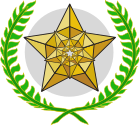
Read this message in your language
Dear Wikimedian,
You are receiving this message because we noticed that you voted in Round 1 of the 2022 Picture of the Year contest, but not yet in the second round. Wikimedia users are invited to vote for their favorite images featured on Commons during the last year (2022) to produce a single Picture of the Year.
Hundreds of images that have been rated Featured Pictures by the international Wikimedia Commons community in the past year were entered in this competition. These images include professional animal and plant shots, breathtaking panoramas and skylines, restorations of historical images, photographs portraying the world's best architecture, impressive human portraits, and so much more.
In this second and final round, you may vote for a maximum of three images. The image with the most votes will become the Picture of the Year 2022.
Round 2 will end at UTC.
Thanks,
the Wikimedia Commons Picture of the Year committee
Delivered by MediaWiki message delivery (talk) 07:46, 5 May 2023 (UTC)
Wiki Loves Earth 2024 - Deutschland[edit]
Hallo Rohieb,
bald ist es soweit: Vom 1. Mai bis zum 30. Juni 2024 findet zum zwölften Mal der internationale Wettbewerb Wiki Loves Earth (kurz: WLE) statt. Dabei können wie immer Nationalparks, Naturschutzgebiete, Geotope und Naturdenkmäler oder andere Schutzgebiete fotografiert und die Fotos hochgeladen werden. Du hast an einem der vergangenen Fotowettbewerbe teilgenommen. Deshalb laden wir dich ein, auch dieses Jahr wieder mitzumachen. Wir freuen uns auf deine Fotos!
Der Wettbewerb ist zweigeteilt, das heißt, wir unterscheiden zwischen den beiden Wettbewerbskategorien Landschaft und Detail/Makro. Zur Wettbewerbskategorie Landschaft zählen auch geschützte Einzelbäume. In der Wettbewerbskategorie Detail/Makro werden Pflanzen, Tiere und Pilze in den Schutzgebieten bewertet.
Es sind wie immer viele spannende Motive überall in Deutschland zu finden. Neben Naturdenkmälern wie alten Bäumen oder Naturparks im Gebirge und am Meer können Geotope wie Findlinge, Quellen und Aufschlüsse oder FFH-Gebiete fotografiert werden, um sie unter anderem in der Wikipedia zu dokumentieren. Auch im vergangenen Jahr sind zahlreiche neue Listen und Artikel in diesen Bereichen entstanden, die sich über Fotos freuen – zum Beispiel in Bayern die Liste der Naturdenkmäler im Landkreis Landshut oder die Liste der geschützten Landschaftsbestandteile in Mecklenburg-Vorpommern mit ihren Unterlisten oder gar einzelne Artikel wie die Landschaftsschutzgebiete Sommerschafweide an Buchhalden und Sommerschafweide auf Hilbertswiese in Baden-Württemberg.
Wir vergeben in diesem Jahr drei Sonderpreise für Fotos von Feldrainen und Feldgehölzen in geschützten Gebieten.
Als Einstieg für die Suche nach Motiven hilft diese Übersichtsseite. Weitere Informationen erhältst du bei WLE 2024 – Deutschland und unter dieser Anleitung.
Damit es ab 1. Mai mit dem Upload schnell geht:
Außerdem laden wir dich ein, vom 15. Mai bis Mitte Juli 2024 an der Vorjury teilzunehmen. Damit bewertest du die hochgeladenen Bilder und ermittelst so gemeinsam mit der Jury, die Anfang August tagen wird, die Sieger von Wiki Loves Earth 2024 in Deutschland. Das Vorjurytool ist bald hier freigeschaltet. Du benötigst dafür nur deinen Benutzernamen und Passwort.
Für Fragen steht das Organisationsteam gerne auf der Support-Seite zur Verfügung. Falls du im nächsten Jahr keine Einladung für Wiki Loves Earth Deutschland haben möchtest, trag dich bitte hier ein. Wir würden das natürlich schade finden, da wir uns auf deine Fotos freuen.
Viel Spaß und Erfolg beim Fotowettbewerb 2024 wünscht dir im Namen des Organisationsteams --Z thomas 17:48, 24 April 2024 (UTC)
